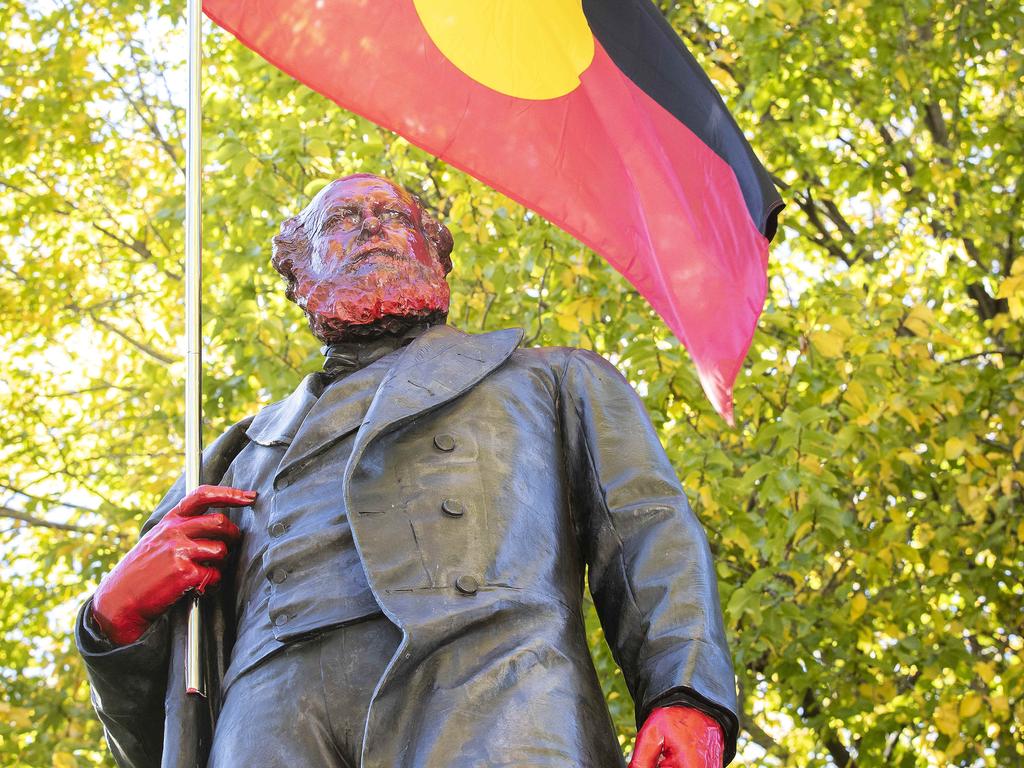Appeal brings stay of execution for former Tasmanian premier William Crowther’s statue
The first toppling of a statue of an Australian premier is effectively on hold at least until early 2024, with the lodgement of a legal challenge backed by a descendant.

The first toppling of a statue of an Australian premier is on hold at least until early next year, with the lodgement of a legal challenge backed by a descendant.
Hobart City Council’s planning committee last month voted to approve the council’s own development application to remove the statue of William Crowther from Franklin Square.
Crowther, a surgeon noted for his work for the poor but also as a bone-hunter, was accused in 1869 of removing and stealing the skull from the corpse of Aboriginal man William Lanne – a claim he denied.
Former alderman Jeff Briscoe on Monday lodged a planning tribunal appeal, along with heritage expert Chris Merridew and Anne Burleigh, a Crowther descendant by marriage.
“It’s an appalling heritage decision, outrageous, really,” Mr Briscoe said. “In the 28 years I was on council, we would never have, I believe, accepted that removal on heritage grounds.
“It’s very political. So we are going to argue on heritage grounds and we have very good grounds about removing the statue from the plinth and removing it from where it’s been for 130 years.
“There’s also the fact that it was placed there close to the building where Crowther used to work, and it was funded by donations from ordinary people in Hobart.”
Mr Briscoe expected the appeal – supported by a GoFundMe campaign – would call a number of expert witnesses.
While a directions hearing and mediation could occur in the short-term, he understood a full hearing before the planning tribunal would not be possible before next year.
Removal of Crowther’s statue, erected in 1889 “by a grateful public, and sincere personal friends”, is part of a global push to remove statues of controversial historic figures.
Mrs Burleigh said the Crowther statue was a “fantastic piece of art” and was a rare case of such a memorial being erected by public subscription.
“Dr Crowther’s introduction and use of the newly discovered ether and chloroform in operations would have benefited Tasmania as a whole,” she said.
“The poor were given free medical consultations and operations – many, many citizens benefited from his ministrations. And now some wish to have his statue removed – a man who was instrumental in shaping the new world.
“Removal of his statue is a despicable wanton act and has affected many citizens, friends, colleagues and beneficiaries, plus relatives who are living now. I know of many who are angered and bewildered.”
However, supporters of the statue’s downfall, including the Tasmanian Aboriginal Centre, argue there is little doubt that Crowther was involved in the Lanne mutilation and his statue is a constant, painful reminder of the abuses suffered by Indigenous people.








To join the conversation, please log in. Don't have an account? Register
Join the conversation, you are commenting as Logout